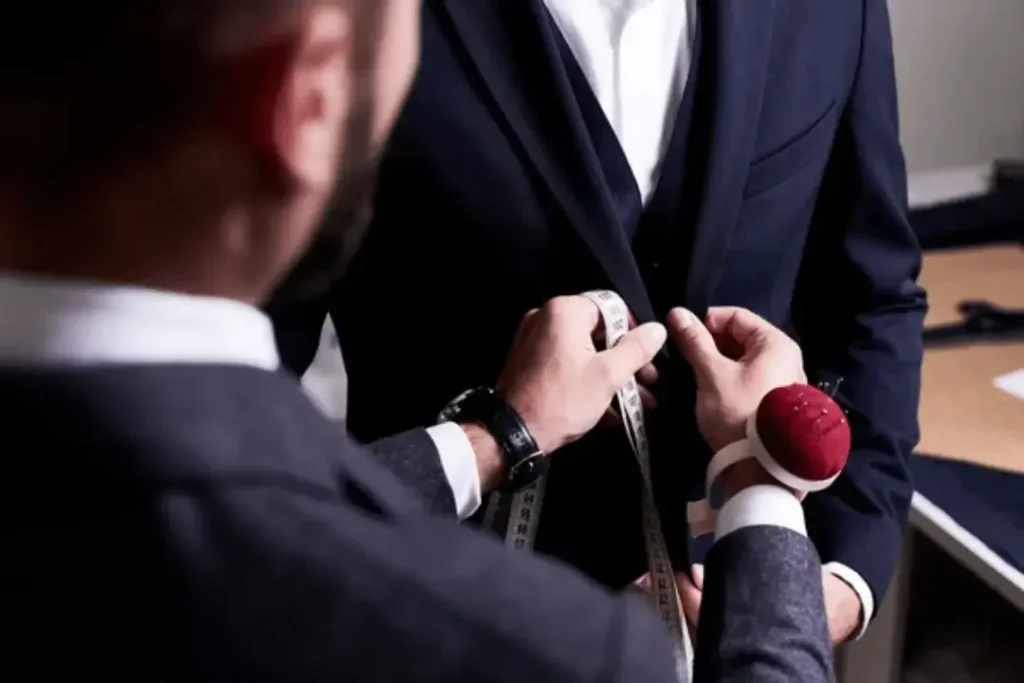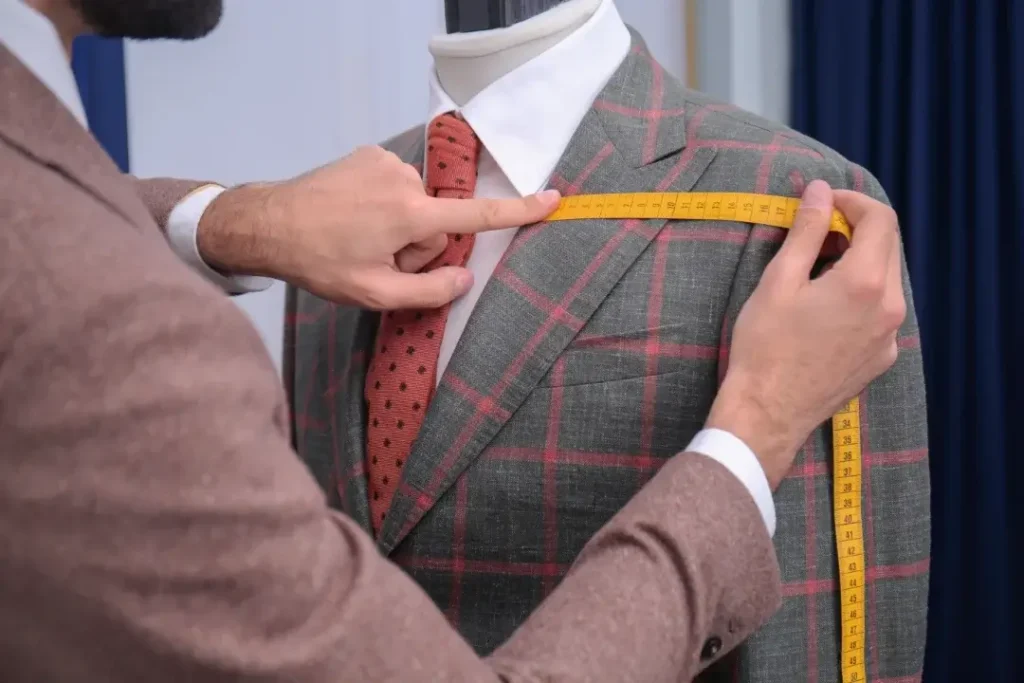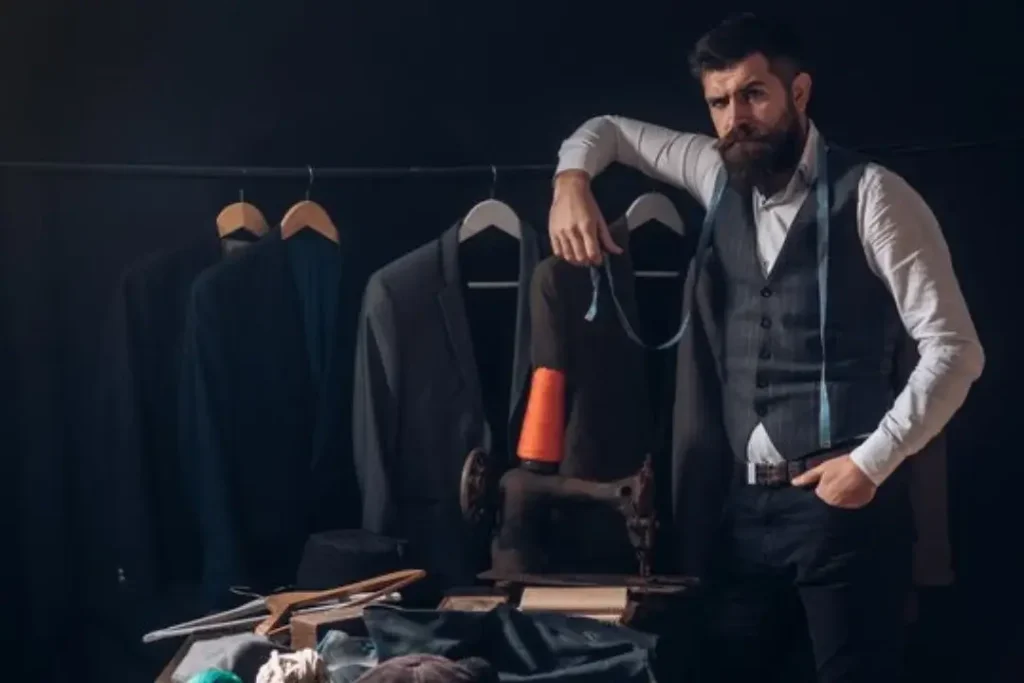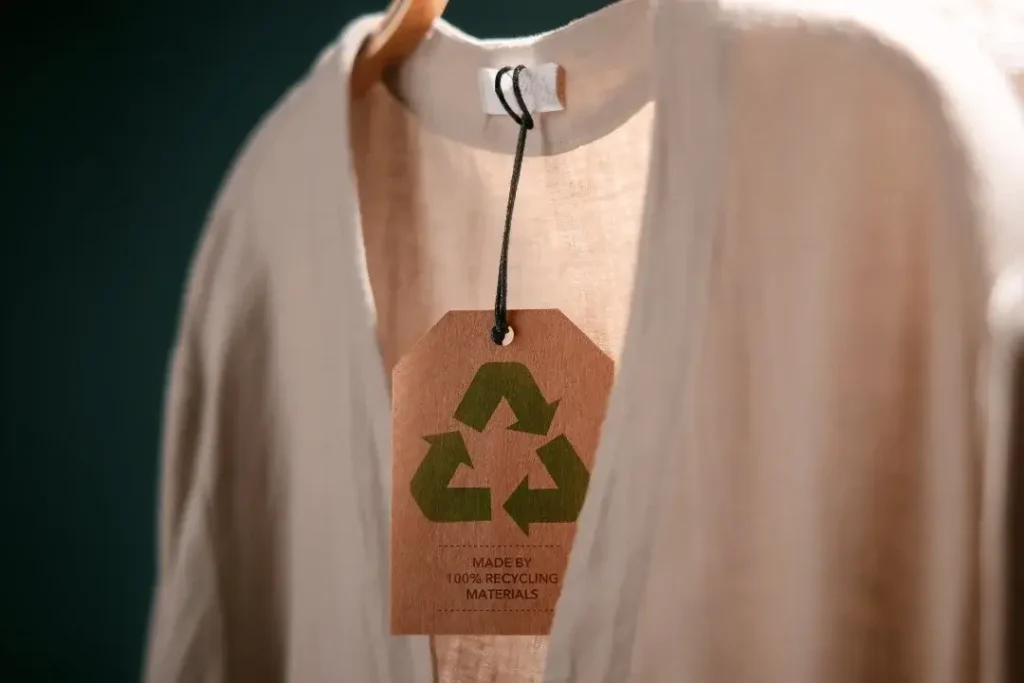
Why Clothing Brands Fail
Top Different Types of Shirts for Women and Men Top Different Types of Shirts for
The Future of Custom-Fit Clothing in 2024-2025 and Beyond How It Could Help B2C Brands Grow
Thanks to advancements in technology and shifting consumer demands, custom-fit clothing is becoming the new norm. By 2025, the demand for custom-fit clothing is expected to surge by 20%, and B2C brands are taking notice.
As a B2C brand owner, you may be wondering why custom-fit clothing matters. The answer is behind the power of personalization. By bringing custom-fit options you are not simply providing clothes but you are communicating their identity and belonging. Putting in the extra effort to ensure your clients not only look good but feel good will benefit you as clients who feel good, look good, and are valued are more likely to remain loyal and spend more time with you.
Today’s consumers an individuals, seeking their identity in a world of sustainability. Individuals desire to separate themselves from the pack and they are willing to open their wallets for it. In fact, 80 percent of consumers like the option of purchasing customizable products, and 55 percent of consumers are willing to pay more when they can customize their products. Custom-fit clothing does that, too—creating something unique helps you check that first box (less waste and better for the environment).
But what is behind this urge for personalization? So for one, social media has made a culture of self-expression where people show off their personalities through their clothes. And the explosion of mass-produced fast fashion is causing collectors to push back against mass-produced, cookie-cutter styles. Far from the one-size-fits-all mass-produced goods of the past, consumers are now hunting for distinctive, premium pieces that embody their values and align with their aesthetics.
May you think that tailor-made garments are only for a B2C model, but that is not true either. B2C brands, including athletic teams and corporate uniforms, would really benefit from providing bespoke fit. Envision your squad taking the field in jerseys that fit like a glove with your company’s mark on them. It’s a great way to build up your brand personality and give that consistent look.
In addition, it helps in the satisfaction and loyalty of your clients with the fit of their clothes. It is more likely that your clients will perform better and represent your brand in a better way when they are confident and comfortable in their uniforms. The result is a win-win that can catapult repeat business and referral.

Improved brand identity: Custom-fit clothing provides uniform dressing that is in line with your brand image and style.
Data Set More Satisfied Clients: The clients would firmly and comfortably perform in their custom-fitted apparel and will never leave your side.
Fewer returns: Bespoke garments have fewer returns, which means less fashion waste—better for your closet and the planet.
Creates USP: Offering custom-fit options helps create a USP that makes your brand distinct from competitors.
In the last few years, the technology created for custom-fit clothing has improved significantly. The entire cycle of making tailor-made clothing has become faster, cheaper, and more efficient, starting with 3D body scanning and ending with AI-developed design tools.
Augmented reality (AR), is one of the most exciting innovations in the design process. AR enables faster production by allowing designers to create virtual prototypes instead of a long physical process of making samples. Perfect Fit Custom Apparel is a demo-changer for B2C brands that almost always need large volumes of custom-fit apparel.

As B2C brands embrace the future of the custom-fit revolution, their approaches should also evolve to meet on-demand consumer needs. So from here, some tips to get you moving
Leverage Technology: Be ahead of the curve by investing in trending and updated design tools and technologies.
Create a solid brand image: Define your brand image that resonates with your values and personality.
Make it eco-friendly: Emphasize your use of sustainable clothing processes and waste reduction practices.
Give room for customization: Let the clients customize as much as they want
A combination of technology, sustainable production methods, and exciting materials are fueling the made-to-measure revolution. This article explains the top innovations that make mass-customized clothing a possibility.

No more taking hundreds of measurements or trying clothes that never fit! The latest trend in the apparel design process revolution is through AI and 3D body scanning, allowing for precise measurements and custom-fitting. Many companies, like Stitch Fix and Indochino, are getting it just right, using technology to make virtual fittings and personalized recommendations work.
As an example, Stitch Fix has a blend of AI with human stylists to create custom looks for clients. Using its algorithms, the company creates a fit profile based on each customer’s body type and preferred styles as well as their lifestyle. It has been proven that this process has lowered the percentage of returns and exchanges, allowing customers to have a simpler and smoother shopping experience.
Up to 30% of garments are wasted as a result of traditional production methods, mainly because they are discarded for not fitting well or not being produced to optimal quality. In contrast, on-demand manufacturing minimizes waste by creating pieces as they are needed. It supports sustainability and reduces the environmental harm that comes along with fashion production.
In fact, one study by McKinsey showed that on-demand manufacturing has the potential to reduce waste by as much as 50% over traditional manufacturing processes. In addition to that, the tailor-made apparel lessens return and exchange which in turn helps by reducing waste, and carbon footprint, along with the packaging and delivery-related costs.

Smart fabrics and wearable technology take made-to-measure clothing further still. Dynamic fits are achieved through more adaptive materials that accommodate changes according to body shape or temperature, promoting comfort and performance. Nike’s self-lacing shoes, for instance, combine sensors and algorithms to deliver a real-time fit to each wearer.
With the progression of technology, it will unveil more advanced materials and clothes-integrated wearable devices. This includes temperature-regulating fabrics all the way to clothing that can track vital signs with immediate feedback.
These advantages not only improve the comfort and performance of your employees, but also play a key role in building the identity of your brand in the eyes of your consumers, and the sky’s the limit with custom-fit clothing for B2C brands. Now, let us discuss why B2C brands must invest in custom-fit clothing in this section.
When uniforms are styled and fitted perfectly, it amplifies morale and enhances productivity. Comfort individualism helps enhance employee performance and representation of the brand. According to a study published in the Harvard Business Review, people who wear formal feel more powerful and confident, which helps them perform better in their jobs.
Custom clothes make it really easy for brands to gather unique designs as well as branding factors that create a niche-market. Making use of custom-fit clothing can help b2c brands craft a cohesive way to convey their values and style and create a stronger, recognizable identity. According to a Journal of Marketing study, employees who wear branded uniform feel a sense of belonging and loyalty towards the brand and are more likely to become advocates for that brand.

Another important feature of the custom-fit revolution is sustainability. This section discusses the benefits of less fashion waste and the growing availability of sustainable material alternatives.
Every year the fashion industry produces millions of tons of waste making it one of the biggest polluters in the world. By eliminating overproduction, made-to-order practices can greatly lessen the ecological damage of fashion production. According to a report by the Ellen MacArthur Foundation, circular business models can reduce waste by 50% and emissions by 30%.

Biodegradable or recyclable fabrics are changing the face of the fashion world. Sustainable apparel companies like Patagonia and Reformation have responded by sourcing more sustainable materials in their production lines. According to research conducted by the National Resources Defense Council, using recycled materials in clothing production can decrease greenhouse gas emissions by as much as 50%.
Ever since the mention of sustainability found its way to consumers, eco-friendliness has only garnered more attention with every passing day, slowly smuggling into B2C in making custom-fit clothing. B2C brands can easily mitigate their plastic waste by adopting conventional and contemporary eco-friendly materials.
Despite plenty of the advantages of custom-fit clothes for B2C brands, there are challenges and considerations to look for. Here, we will look into the disadvantages of it and how to actually overcome them.
For bespoke garments, however, one of the most significant initial concerns B2C brands consider is the price. The price tag of custom-fit clothing may be more at the time of purchase but what you gain in years — brand loyalty and better-performing employees — offsets the initial costs. According to a study conducted by Harvard Business Review, employees who wear clothing that fits comfortably and that they are confident in, tend to stay with a company for a longer period, lowering turnover expenses.
Gradual rollout: Introduce tailored clothing incrementally, beginning with specific teams or departments.
Partnering with reliable manufacturers: Work with a clothing manufacturer that provides scalable solutions and flexible pricing.
Return on investment: Do a proper cost-benefit analysis for the two situations – How much money will you save for this investment?

And as B2C brands are discovering, the ability to adapt over time to a changing measurement is another challenge they may face. As employees develop and their bodies change, their clothing needs may change as well. Here are a few strategies to help B2B brands keep fits up to date:
Periodic re-measurements: Incorporate periodic re-measurements to ensure that clothing continues to fit employees well.
Versatile styles: Use versatile styles that allow for shifting body shape or size
Clothing that can be adjusted: Provide adjustable fit clothing that a wearer can alter to fit changing measurements.
Custom-fit apparel could be just the thing for B2C brands that need to rethink the way they go about outfitting employees. Besides the better fit, comfort, and sustainability of custom-fit clothing can improve employee performance, strengthen brand identity and fulfill sustainability goals. We urge businesses to engage with progressive clothing manufacturers to avoid getting left behind and to take advantage of tailored apparel.
Custom-fit clothing is apparel tailored to an individual’s measurements, offering better fit and comfort
It enhances employee performance, aligns with sustainability, and strengthens brand identity.
3D body scanning, AI, and advanced digital tools.
Initially, yes, but it offers long-term value through better quality, fit, and sustainability.
Partner with innovative manufacturers offering scalable solutions.
Expert Custom Clothing Manufcaturer

Top Different Types of Shirts for Women and Men Top Different Types of Shirts for

What You Must Know About Clothing Samples? Before You Produce a Single Garment: What You

How Much Does It Cost To Make a Hoodie A Complete Cost Breakdown for Custom

Discover the Types of Buttons Discover the Types of Buttons That Transform Style and Functionality
Most Recent Posts
Expert Custom Clothing Manufcaturer
Join our Mailing list!
Get all latest news, exclusive deals and updates.